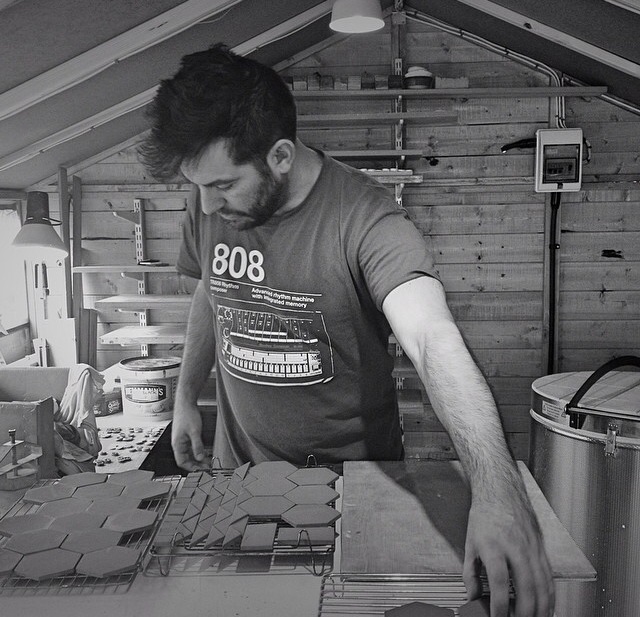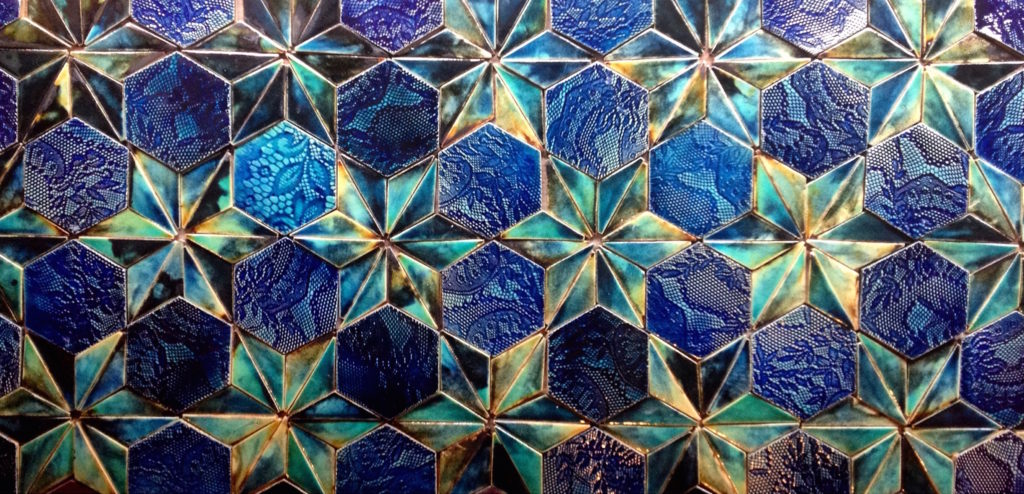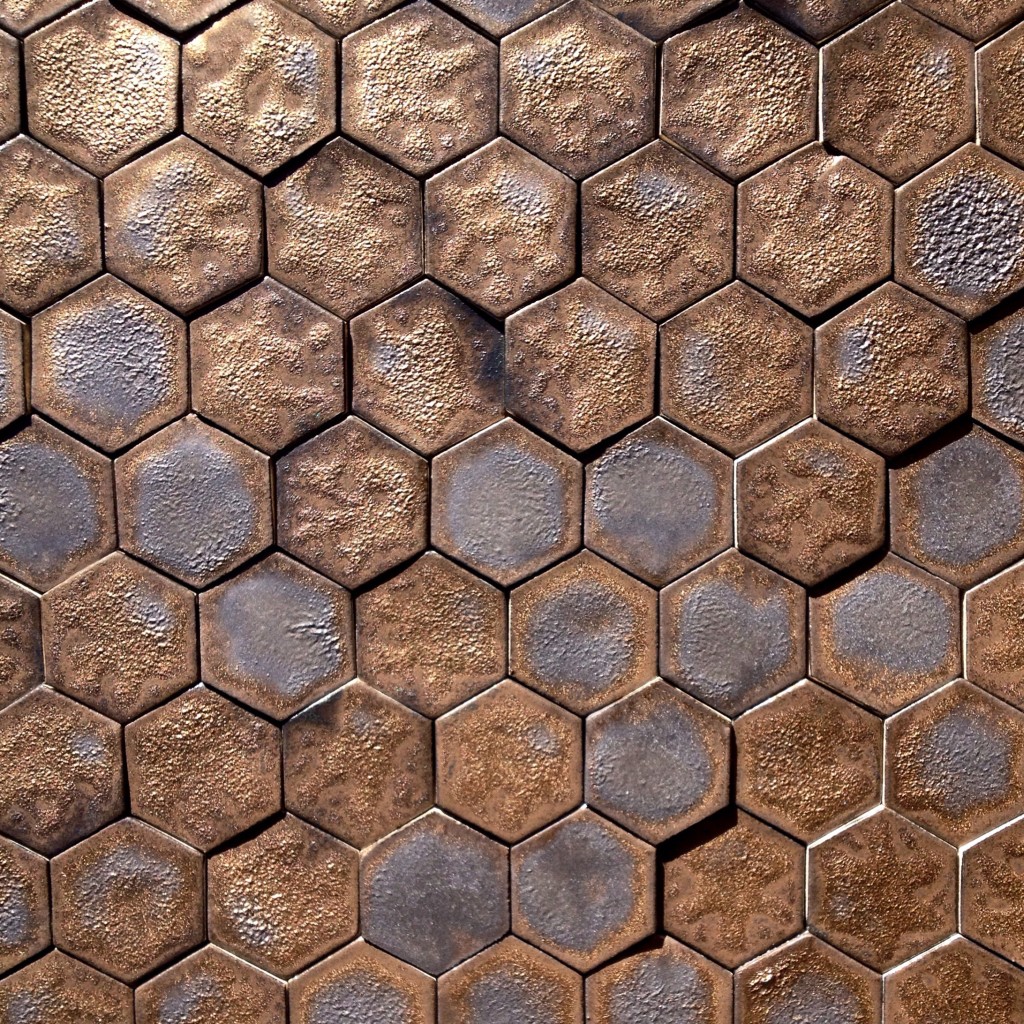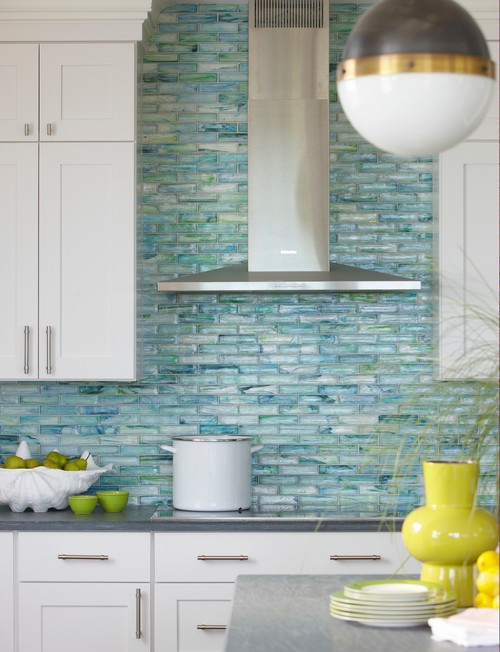Whether you are a design professional or an educated homeowner you’ve probably heard the term “kitchen work triangle”. In fact it’s probably one of the first things you learn when endeavoring to create a new kitchen. Who thought this up? It is actually the result of a study made at the University of Illinois in the 1950s! If you’re wondering if it could be outdated, just think of how much kitchens have changed since then in terms of products, appliances and how we use them.The National Kitchen and Bath Association (NKBA) defines the kitchen “work triangle” an imaginary straight line drawn from the center of the sink, to the center of the cook top, to the center of the refrigerator and finally back to the sink.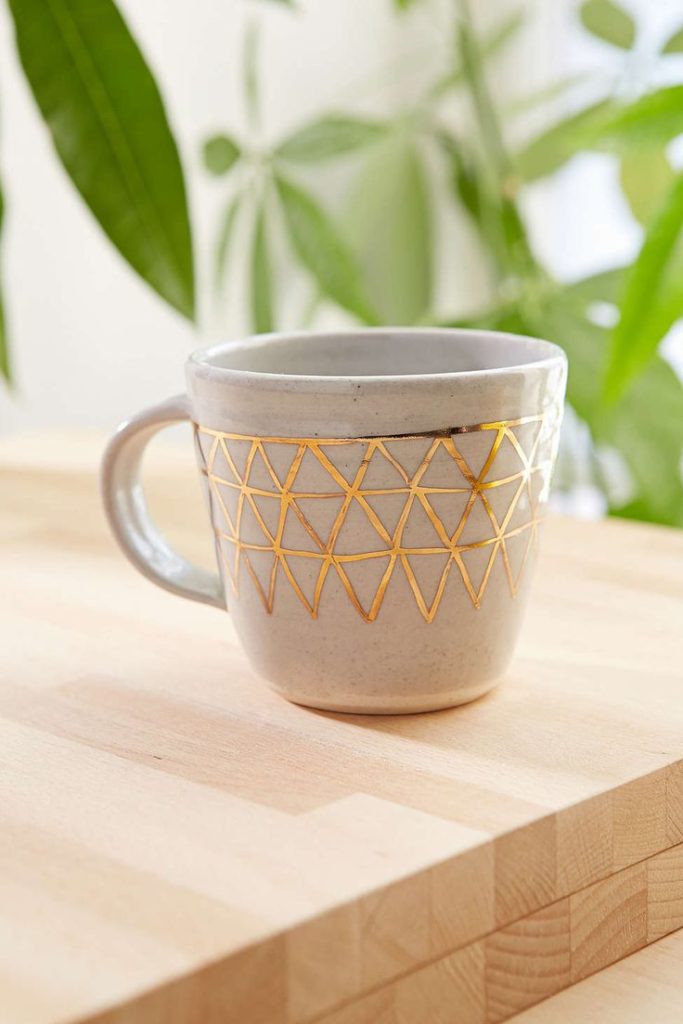 The NKBA suggests the following guidelines for determining a work triangle:- The sum of the work triangle's three sides should not exceed 26 ft. and each leg should measure between 4 ft. and 9 ft.
The NKBA suggests the following guidelines for determining a work triangle:- The sum of the work triangle's three sides should not exceed 26 ft. and each leg should measure between 4 ft. and 9 ft.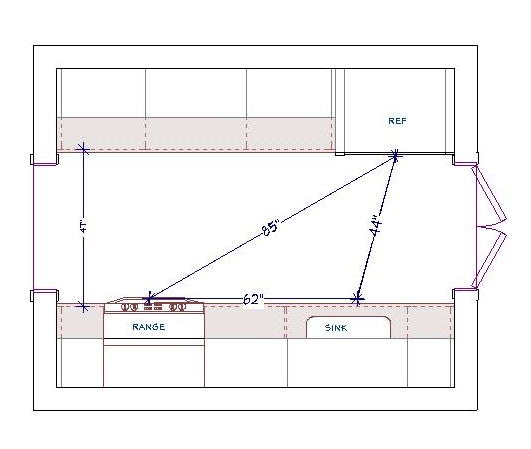 - The work triangle should not cut through an island or peninsula by more than 12 inches.- If the kitchen has only one sink, it should be placed between or across from the cooking surface, preparation area or refrigerator.Yes, this makes kitchen design sound a bit like solving a puzzle and, actually, it really is. I know my design is “right” when the layout works from every angle in terms of safety, ease of function and, of course, aesthetics.
- The work triangle should not cut through an island or peninsula by more than 12 inches.- If the kitchen has only one sink, it should be placed between or across from the cooking surface, preparation area or refrigerator.Yes, this makes kitchen design sound a bit like solving a puzzle and, actually, it really is. I know my design is “right” when the layout works from every angle in terms of safety, ease of function and, of course, aesthetics.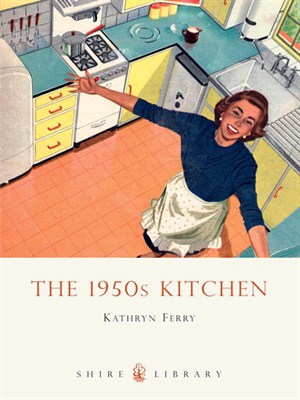 Some of the design solution is just good sound common sense but much of it should be directed by the individual needs of the client. I don’t “do” the triangle as a rule. Today we have multiple cook kitchens and no end of possible appliances. Modern kitchens are so unlike those of 60 years ago, so I use the more updated concept of “work centers”. The basic ones are food prep, cooking, clean up and storage.
Some of the design solution is just good sound common sense but much of it should be directed by the individual needs of the client. I don’t “do” the triangle as a rule. Today we have multiple cook kitchens and no end of possible appliances. Modern kitchens are so unlike those of 60 years ago, so I use the more updated concept of “work centers”. The basic ones are food prep, cooking, clean up and storage. 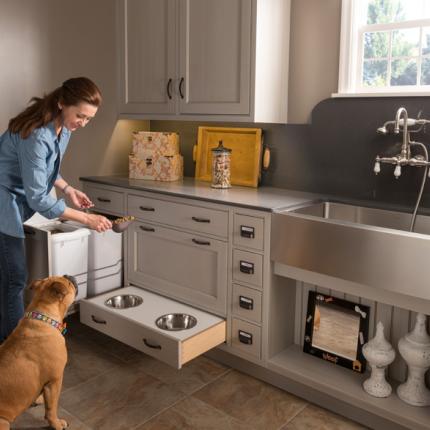 So while efficiency is still at the forefront, the thinking is a bit more evolved to address twenty first century needs.In a perfect world, work centers should be situated to allow someone to work in one area without getting in the way of someone using another. However, let’s face it, in a very small kitchen that is just not going to happen! The focus then is twofold: enough storage and enough counter space.
So while efficiency is still at the forefront, the thinking is a bit more evolved to address twenty first century needs.In a perfect world, work centers should be situated to allow someone to work in one area without getting in the way of someone using another. However, let’s face it, in a very small kitchen that is just not going to happen! The focus then is twofold: enough storage and enough counter space.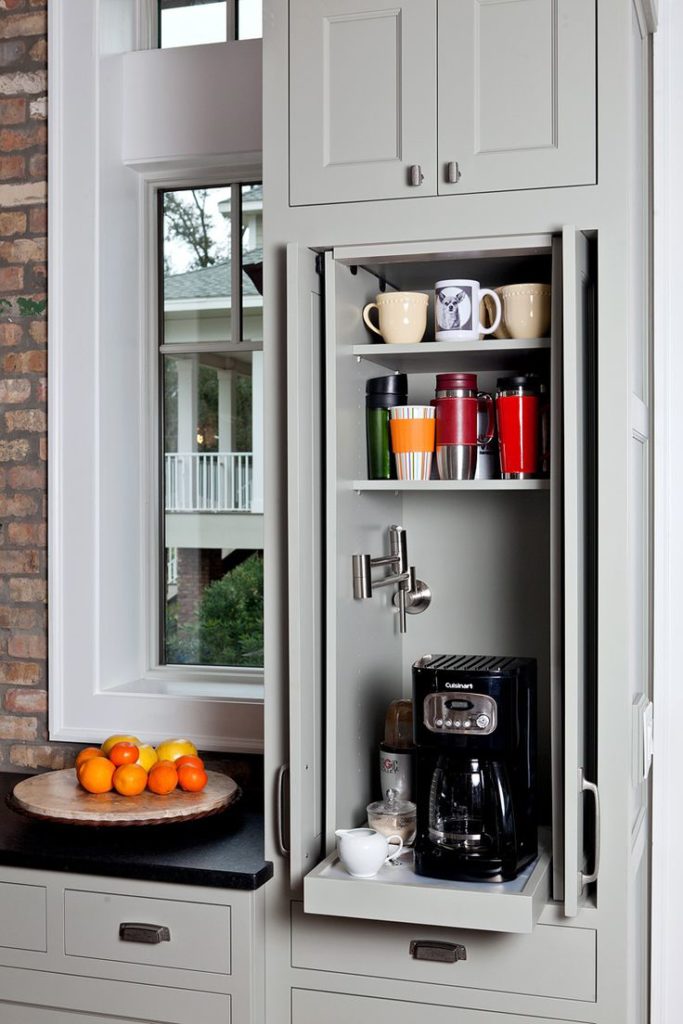 The types of work centers you can have is only limited by your imagination. Here are some good ones:-Beverage center- It can be coffee/tea, smoothies, wine or cocktails-Media center-It can be sit down area for menu planning, computer, charging station or TV-Baking center- You can trick this area out with customized storage for bake ware, bowls, utensils and a marble top for rolling dough.
The types of work centers you can have is only limited by your imagination. Here are some good ones:-Beverage center- It can be coffee/tea, smoothies, wine or cocktails-Media center-It can be sit down area for menu planning, computer, charging station or TV-Baking center- You can trick this area out with customized storage for bake ware, bowls, utensils and a marble top for rolling dough.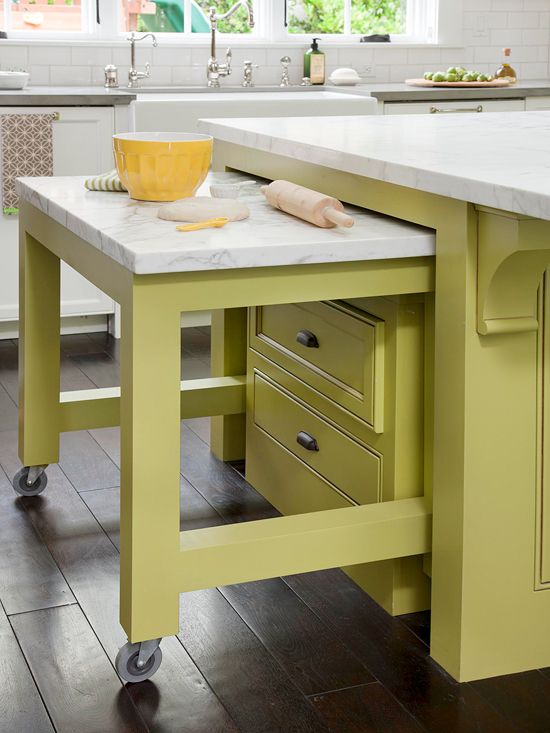 Remember that an “artful kitchen” employs what I call “practical creativity”. Function is the infrastructure, beauty comes next, the art is getting both just right.
Remember that an “artful kitchen” employs what I call “practical creativity”. Function is the infrastructure, beauty comes next, the art is getting both just right.
A Tile Tale Inspired by Life and Process: Meet Guy Mitchell
Artful Kitchen Composition Inspired by Jane Freilicher
"To strain after innovation, to worry about being 'on the cutting edge' – a phrase I hate – reflects concern for a place in history or for one's career rather than for the authenticity of one's own painting."- Jane Freilicher
One of the reasons I became a designer is because I just have to do something that involves creativity. Art is a huge part of what I think about and what inspires me. If you follow me on social media, you may have noticed the “Super Cool Peeps” board on my personal Pinterest. It’s packed with images of my favorite artists or otherwise creative muses. I thought it would be an interesting change of pace to highlight one every now and then.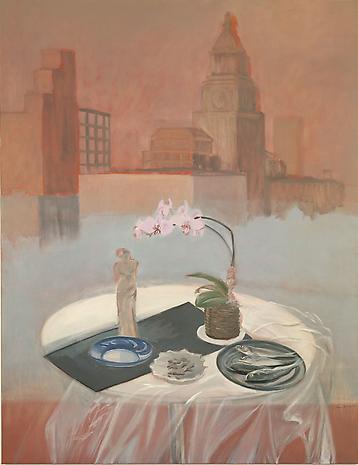 Jane Freilicher who passed away on December 9, 2014 at the age of 90, was sometimes referred to as “the poet’s painter”. I love the quote above and I think it's true of design as well as art. Nothing is truly 100% original. The point is to personalize what you produce in just the right way for your clients. Jane was a lifelong resident of the "Big Apple" who created her own landscapes with still life. To me they seem like a moment of tranquility layered over the vibrancy of New York City. She did also spend time on Long Island, in the Hamptons, which is another aspect of her work.
Jane Freilicher who passed away on December 9, 2014 at the age of 90, was sometimes referred to as “the poet’s painter”. I love the quote above and I think it's true of design as well as art. Nothing is truly 100% original. The point is to personalize what you produce in just the right way for your clients. Jane was a lifelong resident of the "Big Apple" who created her own landscapes with still life. To me they seem like a moment of tranquility layered over the vibrancy of New York City. She did also spend time on Long Island, in the Hamptons, which is another aspect of her work.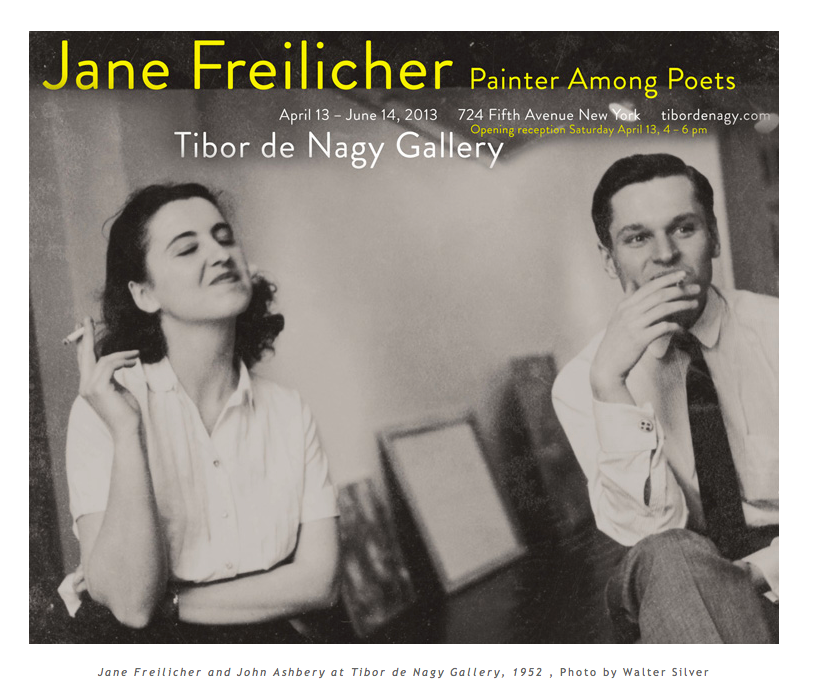 In the 1950’s Freilicher kept company with not only the leading abstract expressionists, but also many poets of the time such as Frank O’hara and John Ashbery. She was part of an informal circle of writers and artists called the New York School. Interestingly, O’Hara was the first person to purchase one of her paintings!
In the 1950’s Freilicher kept company with not only the leading abstract expressionists, but also many poets of the time such as Frank O’hara and John Ashbery. She was part of an informal circle of writers and artists called the New York School. Interestingly, O’Hara was the first person to purchase one of her paintings!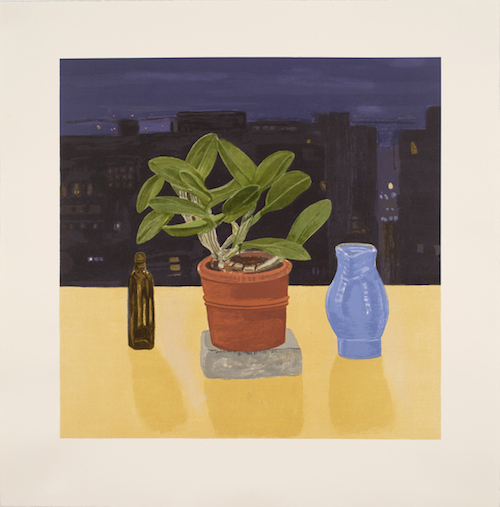 Freilicher could be called the quintessential Bohemian. She dropped out of school at 17 to marry a jazz musician. Jazz, poetry and art were all an integral part of who she was. She was also a rebel, choosing to paint portraits and still life at a time when Abstract Expressionism was all the rage.
Freilicher could be called the quintessential Bohemian. She dropped out of school at 17 to marry a jazz musician. Jazz, poetry and art were all an integral part of who she was. She was also a rebel, choosing to paint portraits and still life at a time when Abstract Expressionism was all the rage.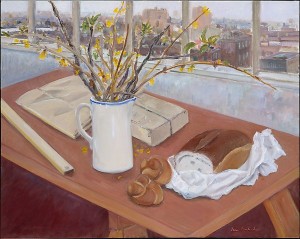 Still life is not normally a big draw for me but the way in which Freilicher placed hers is intriguing. It’s the clean purity of a flower contrasting with the grimy, gritty but also living cityscapes. This is all portrayed with a sense of quiet solitude, a rising above.
Still life is not normally a big draw for me but the way in which Freilicher placed hers is intriguing. It’s the clean purity of a flower contrasting with the grimy, gritty but also living cityscapes. This is all portrayed with a sense of quiet solitude, a rising above.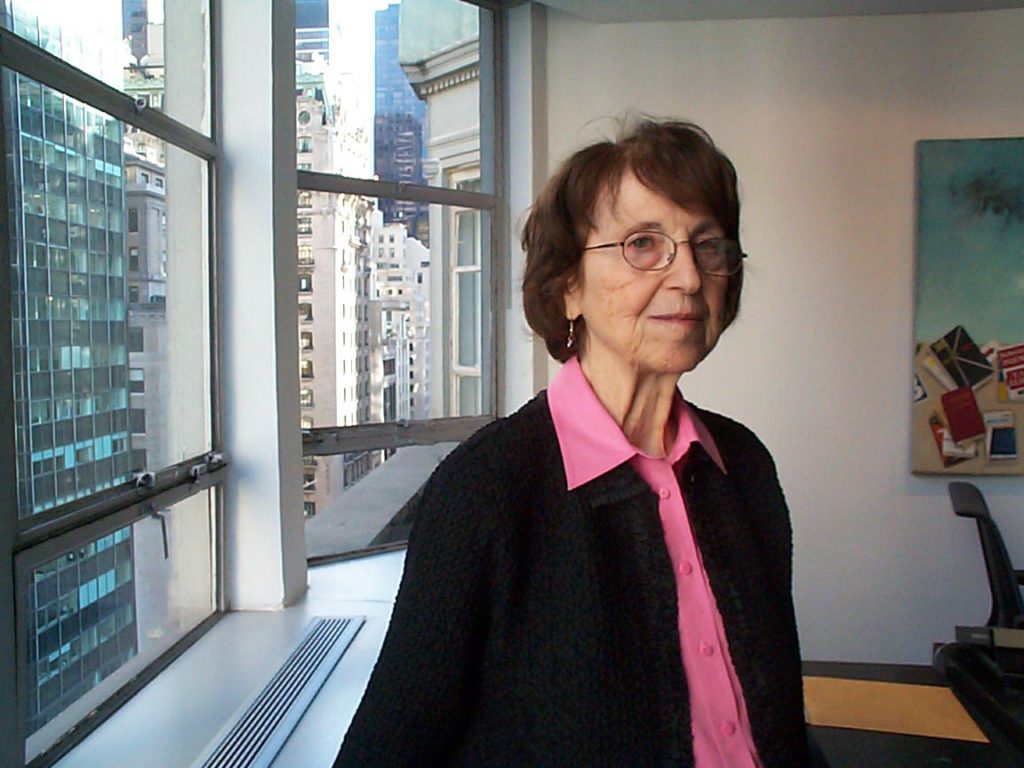 You can include a bit of Jane's vision in your own artful kitchen. A lovely floral arrangement placed strategically by a window works perfectly! You can do it where ever you are and it becomes your very own creativity touchstone.
You can include a bit of Jane's vision in your own artful kitchen. A lovely floral arrangement placed strategically by a window works perfectly! You can do it where ever you are and it becomes your very own creativity touchstone. As with all artists, Jane lives on in her work which can be seen in many museums and galleries including The Metropolitan Museum of Art, The Museum of Modern Art and The Whitney Museum.
As with all artists, Jane lives on in her work which can be seen in many museums and galleries including The Metropolitan Museum of Art, The Museum of Modern Art and The Whitney Museum.
Everything You Wanted to Know About Tile: An Interview with Ryan Fasan
Before we get too crazy with the art here (I'm so sure we will!) I wanted to share some solid info about tile from the man who knows it best, Ryan Fasan. I had the pleasure of meeting "THE tile man" on my recent trip to the trade show Cevisama with Tile of Spain. Ryan is a professional consultant for all things tile related and also spoke this past week at the trade show Coverings in Orlando. Explaining and sharing his vision and understanding of ceramic tile is what he does best and he has graciously agreed to dish his knowledge here with us at Artful Kitchens. Take it away, Ryan! (For your viewing pleasure I am including some photos from some of the Spanish tile brands seen at Cevisama15)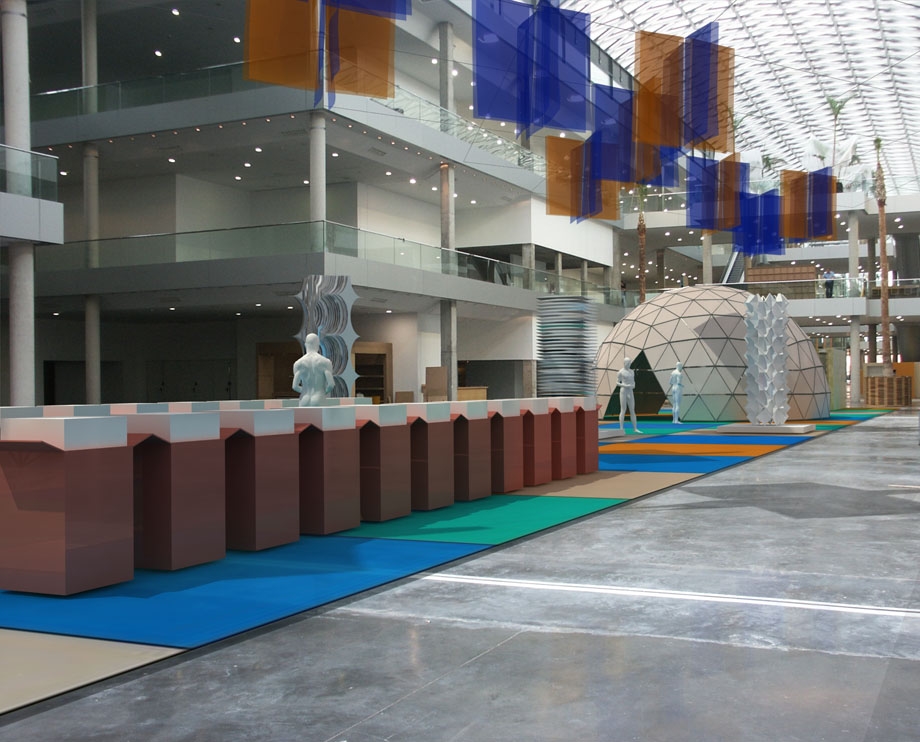 AK: What’s the difference between porcelain and ceramic tile? Ryan: Porcelain (who’s technical term is impervious tile) is a classification of ceramic tile. There are four types of tile, each classified by its water absorption capabilities. Impervious or porcelain tile happens to be the densest with a porosity of 0.5% or less. It is important to note that densest does not mean “best” in every application. The industry makes four types of tile for a reason and each type has an optimal area of use. When selected and installed properly any type of tile can last for decades if not centuries.AK: Is it true that porcelain tile is the same color all the way through?Ryan: Well there is "through-body" porcelain and colored body porcelain which is probably what you're referring to. Through-body is a heavy duty commercial product that is unglazed and extremely durable with very low water absorpbtion, usually around 0.01%In residential design you're more likely to encounter colored body porcelain which has some type of glaze. The body of the tile is then colored to match the glaze but the wear layer is still just in the glaze, so no, it's not "the same" all the way through.
AK: What’s the difference between porcelain and ceramic tile? Ryan: Porcelain (who’s technical term is impervious tile) is a classification of ceramic tile. There are four types of tile, each classified by its water absorption capabilities. Impervious or porcelain tile happens to be the densest with a porosity of 0.5% or less. It is important to note that densest does not mean “best” in every application. The industry makes four types of tile for a reason and each type has an optimal area of use. When selected and installed properly any type of tile can last for decades if not centuries.AK: Is it true that porcelain tile is the same color all the way through?Ryan: Well there is "through-body" porcelain and colored body porcelain which is probably what you're referring to. Through-body is a heavy duty commercial product that is unglazed and extremely durable with very low water absorpbtion, usually around 0.01%In residential design you're more likely to encounter colored body porcelain which has some type of glaze. The body of the tile is then colored to match the glaze but the wear layer is still just in the glaze, so no, it's not "the same" all the way through.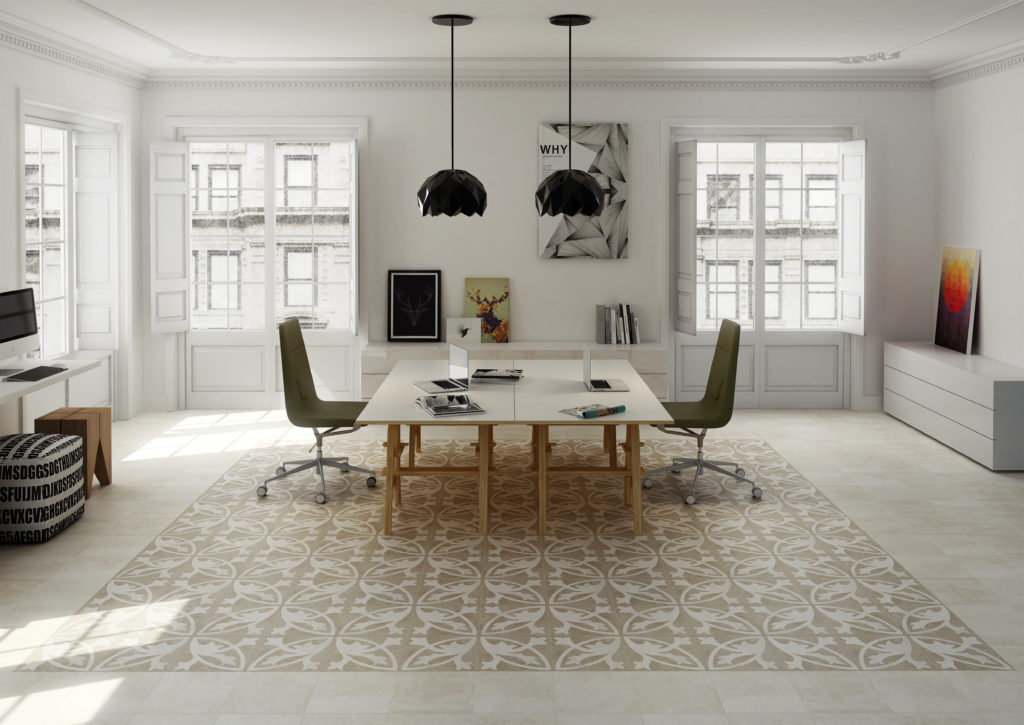 AK: Do I have to use grout?Ryan: Even though this is often the wording used, the real question is do I have to leave a joint or can I just put the tile tightly together (called a butt-joint)? The answer is yes, you do have to have a joint. Our buildings are not as solid or perfect as we often think they are. Joints allow for natural expansion and contraction.AK: I know that all tile is made of white or red clay. Is one better than the other?Ryan: Absolutely not! A good factory will make quality tile from any color of clay. Often the most cost-effective and environmentally responsible decision is to use whatever color of clay is locally available and modify it as required. Price is most likely dictated by the proximity of the clay source.
AK: Do I have to use grout?Ryan: Even though this is often the wording used, the real question is do I have to leave a joint or can I just put the tile tightly together (called a butt-joint)? The answer is yes, you do have to have a joint. Our buildings are not as solid or perfect as we often think they are. Joints allow for natural expansion and contraction.AK: I know that all tile is made of white or red clay. Is one better than the other?Ryan: Absolutely not! A good factory will make quality tile from any color of clay. Often the most cost-effective and environmentally responsible decision is to use whatever color of clay is locally available and modify it as required. Price is most likely dictated by the proximity of the clay source.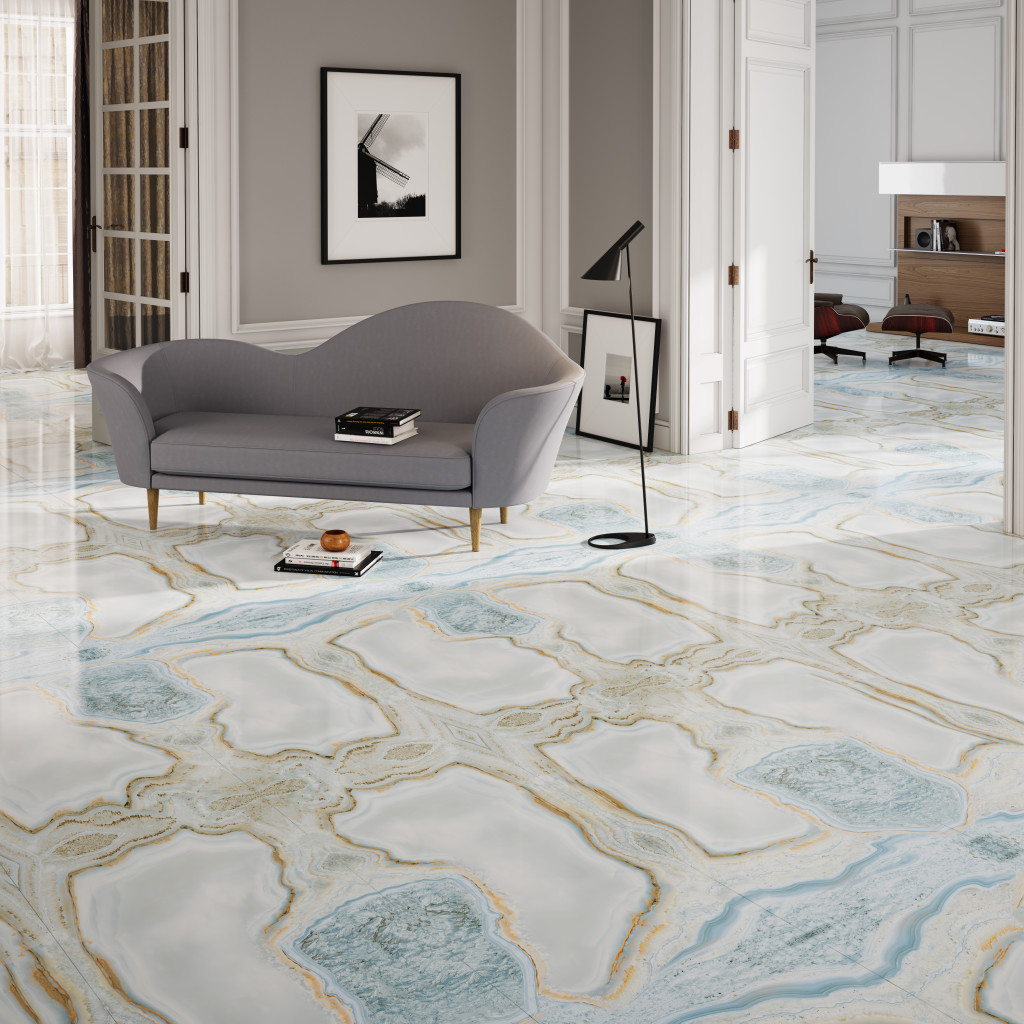 AK: What benefits are there to “rectified” tile?Ryan: Rectification is the cutting grinding of all 4 sides of the fired tile to ensure that all sides are square and the entire surface area is flat. By removing the sides, we get rid of the characteristic “pillow” in a ceramic which makes for much more realistic stone or wood reproductions. This can allow for a joint as small as 1/16"! However remember to ask if a tile is mono-calibre before specifying that small of a joint.
AK: What benefits are there to “rectified” tile?Ryan: Rectification is the cutting grinding of all 4 sides of the fired tile to ensure that all sides are square and the entire surface area is flat. By removing the sides, we get rid of the characteristic “pillow” in a ceramic which makes for much more realistic stone or wood reproductions. This can allow for a joint as small as 1/16"! However remember to ask if a tile is mono-calibre before specifying that small of a joint. Wow! Just think how knowledgeable you are going to be next time you go tile shopping! Thanks again to Ryan for taking the time to answer my probing tile questions.Continue the conversation on FaceBook. Is there something more you'd like to know about tile or a fact that you'd like to share?
Wow! Just think how knowledgeable you are going to be next time you go tile shopping! Thanks again to Ryan for taking the time to answer my probing tile questions.Continue the conversation on FaceBook. Is there something more you'd like to know about tile or a fact that you'd like to share?
Street Art=Urban Edge for Your Kitchen
According to our friends at Wikipedia, "Street art is visual art created in public locations, usually unsanctioned artwork executed outside of the context of traditional art venues. The term gained popularity during the graffiti art boom of the early 1980s." I have always been intrigued by the visual language of Basquiat and the mystery of Banksy.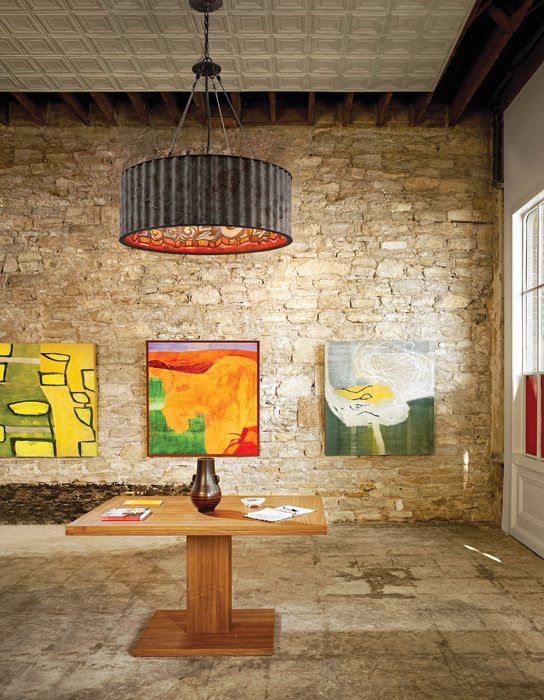 Taking it to the street and making public art has a wild appeal and now you can have a little taste of that in your home. Wouldn't it be fun? Check out this brand new product with info hot off the press release!
Taking it to the street and making public art has a wild appeal and now you can have a little taste of that in your home. Wouldn't it be fun? Check out this brand new product with info hot off the press release!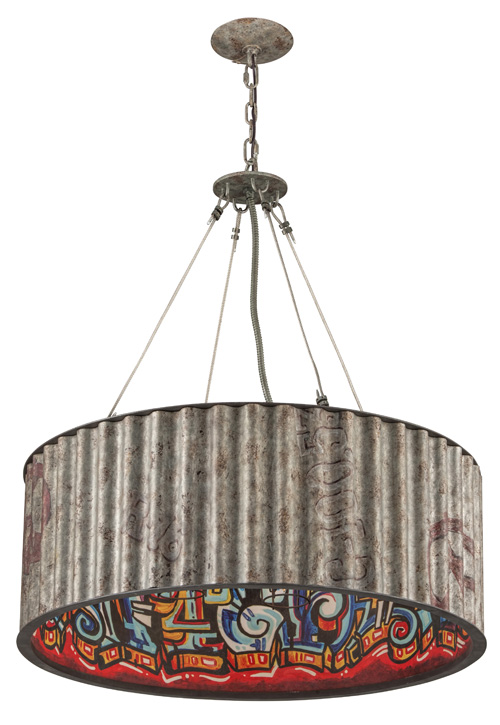 "Troy Lighting is proud to introduce a new statement collection perfect for a cool loft environment, "Street Art" is a new series incorporating vibrant colors, artistic creations and unusual materials. Suspended from aircraft cable, the round, galvanized and corrugated pendant in hand-worked wrought iron features faded out sign references on its fence-like exterior. Inside, you can find colorful graffiti-inspired spray paint designs – applied by hand – and light bulbs protected by vintage wire guards.
"Troy Lighting is proud to introduce a new statement collection perfect for a cool loft environment, "Street Art" is a new series incorporating vibrant colors, artistic creations and unusual materials. Suspended from aircraft cable, the round, galvanized and corrugated pendant in hand-worked wrought iron features faded out sign references on its fence-like exterior. Inside, you can find colorful graffiti-inspired spray paint designs – applied by hand – and light bulbs protected by vintage wire guards.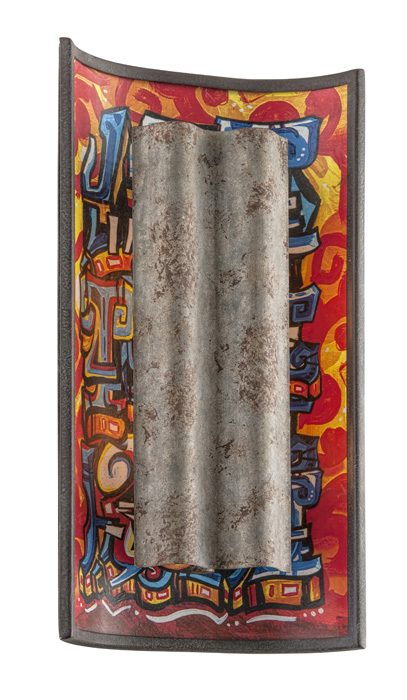 Street Art is offered in various pendant sizes, a semi-flush mount and a curved, rectangular wall sconce, which beautifully lights up the artwork. Hip and edgy, Street Art is a fun statement piece." How could you add a touch of "street art" to your kitchen? Let's continue the conversation on FaceBook or email me at ArtfulKitchensbyGlo@gmail.com
Street Art is offered in various pendant sizes, a semi-flush mount and a curved, rectangular wall sconce, which beautifully lights up the artwork. Hip and edgy, Street Art is a fun statement piece." How could you add a touch of "street art" to your kitchen? Let's continue the conversation on FaceBook or email me at ArtfulKitchensbyGlo@gmail.com
The Artful Kitchen: Permission to Dream
Welcome to Artful Kitchens! I have so much to share with you in the world of art and design and especially how you can successfully merge the two to find your own personal style in the kitchen. Thank you to Leslie Carothers of The Kaleidescope Partnership and Brian McDaniel of bkmacdaddy designs for their excellent help! In the coming posts I will be writing about color, elements of design, the art and artists that inspire me and much more. Please share, share, share and help me spread the word! Oh, and I would love to collaborate with YOU!! Email me at: ArtfulKitchensbyGlo@gmail.com
The first step in creating an artful kitchen is to give yourself permission to dream. Doesn't that sound wonderful?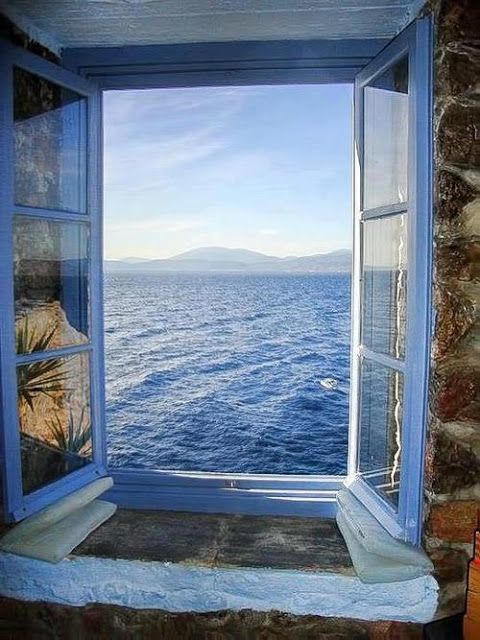 As a kitchen designer I have several priorities in mind when I begin a kitchen plan. Aesthetics, lifestyle and especially function come into play. All are critical components. I also have observed that the most effective and complex kitchen creations are the result of evolution. The details reveal themselves from each decision that has come before. That said, you still need a starting place, one that will hopefully evolve into your own unique personal statement. The buzzword today is personalization and it’s here to stay. That’s where dreaming comes in.
As a kitchen designer I have several priorities in mind when I begin a kitchen plan. Aesthetics, lifestyle and especially function come into play. All are critical components. I also have observed that the most effective and complex kitchen creations are the result of evolution. The details reveal themselves from each decision that has come before. That said, you still need a starting place, one that will hopefully evolve into your own unique personal statement. The buzzword today is personalization and it’s here to stay. That’s where dreaming comes in. 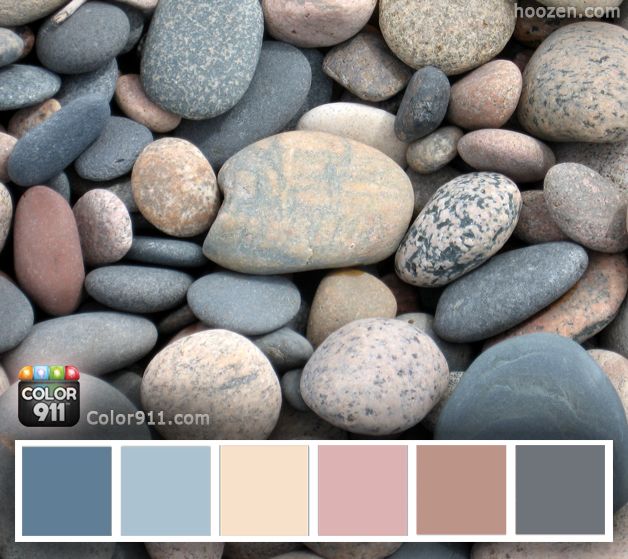 These color schemes from Color911 are inspired by nature. If you love them they go in your “dream file”. Don’t worry about “the hows” just yet.
These color schemes from Color911 are inspired by nature. If you love them they go in your “dream file”. Don’t worry about “the hows” just yet.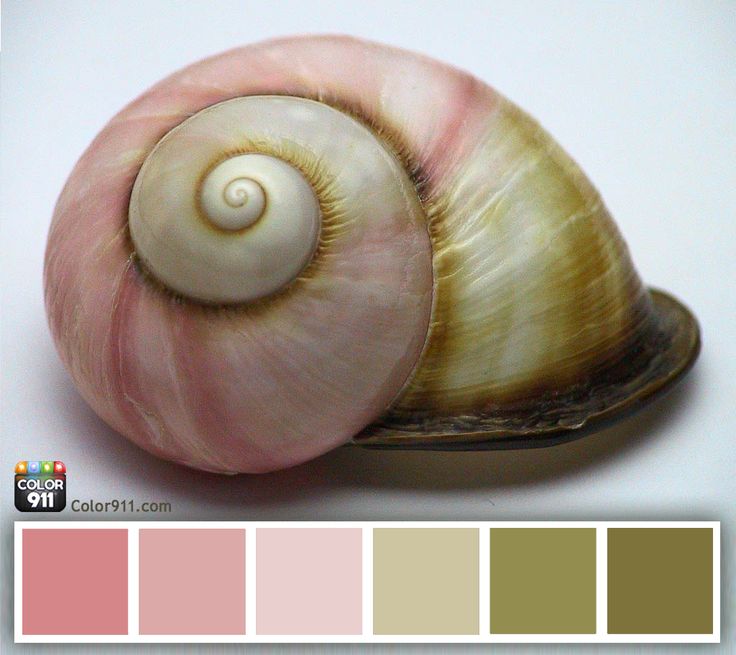 Just think if you could take function out of the equation! Heck, what if you didn’t even have space parameters? What would you like to see if you could do ANYTHING? With no editing allowed, at least not yet, you would get to the essence of your of personal style.
Just think if you could take function out of the equation! Heck, what if you didn’t even have space parameters? What would you like to see if you could do ANYTHING? With no editing allowed, at least not yet, you would get to the essence of your of personal style. 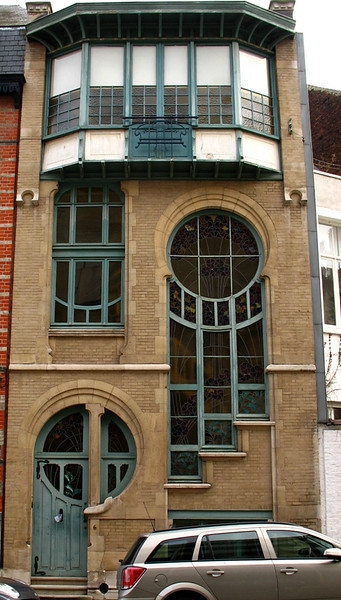 This is step one. Have fun with it. The only rule is that you enjoy the process. Only the things that please and excite you are allowed. Seriously. it doesn’t even have to be a kitchen!! Use good old paper and colored pencils, crayons, markers, paint, a computer or Pinterest. It’s all good. Don’t think too much just dive in and do it!
This is step one. Have fun with it. The only rule is that you enjoy the process. Only the things that please and excite you are allowed. Seriously. it doesn’t even have to be a kitchen!! Use good old paper and colored pencils, crayons, markers, paint, a computer or Pinterest. It’s all good. Don’t think too much just dive in and do it!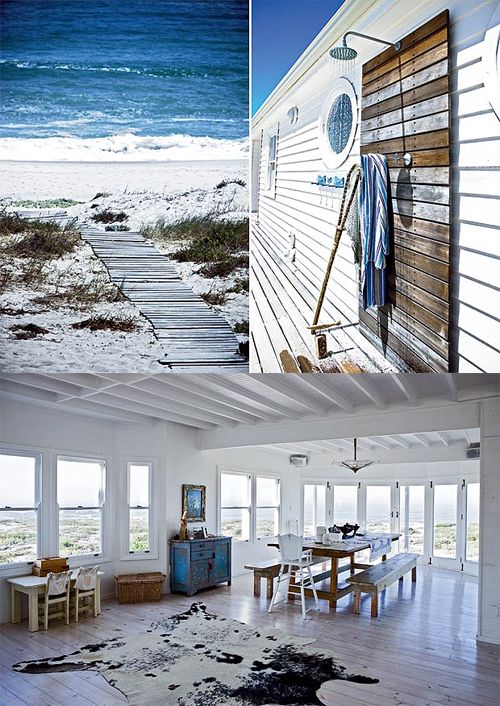 Share your vision with me and if you are chosen you may see your own artful kitchen come to life right here on my blog. Email me at artfulkitchensbyGlo@gmail.com Next in this series: Creating An Artful Kitchen, Step Two: Defining the Essence
Share your vision with me and if you are chosen you may see your own artful kitchen come to life right here on my blog. Email me at artfulkitchensbyGlo@gmail.com Next in this series: Creating An Artful Kitchen, Step Two: Defining the Essence

